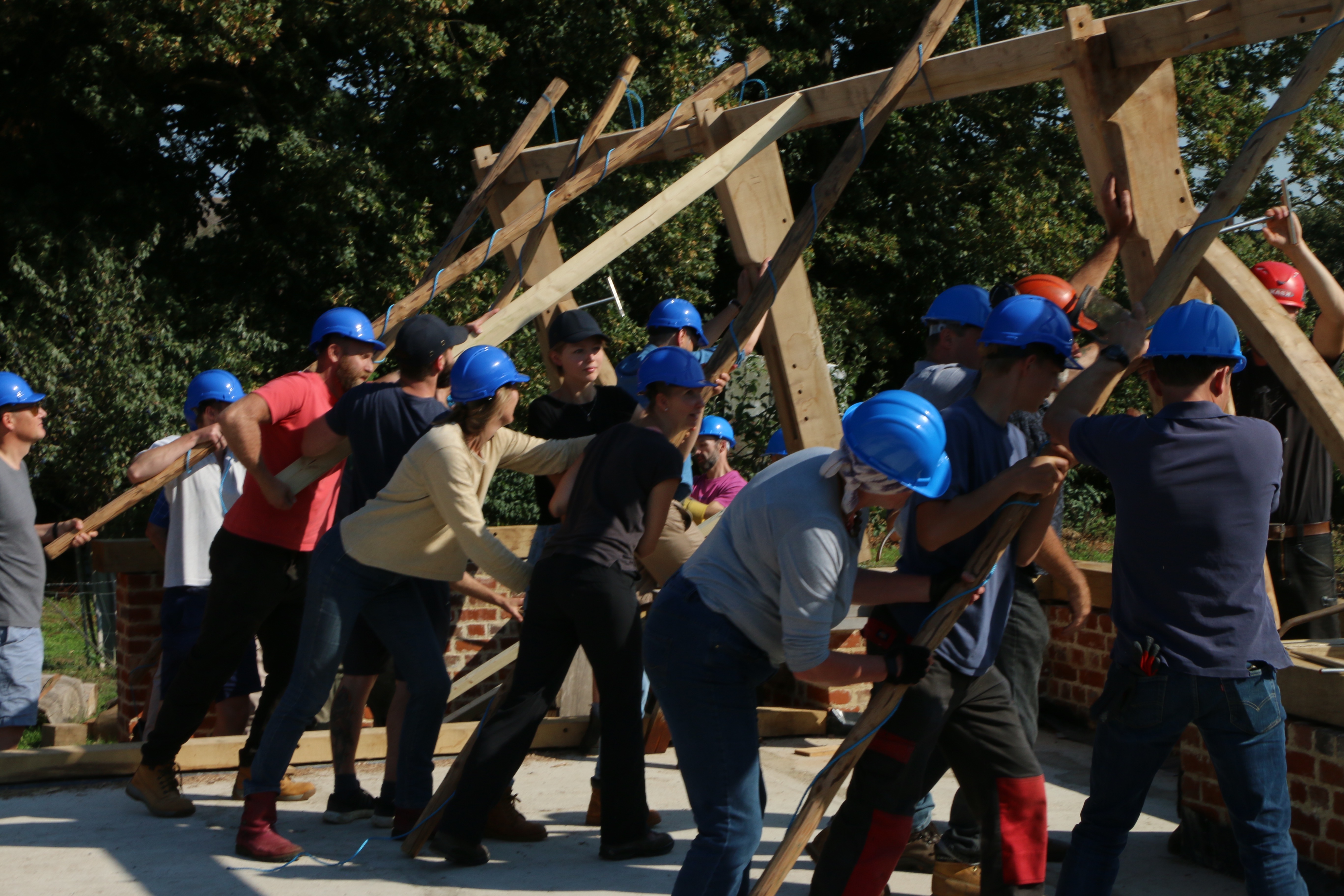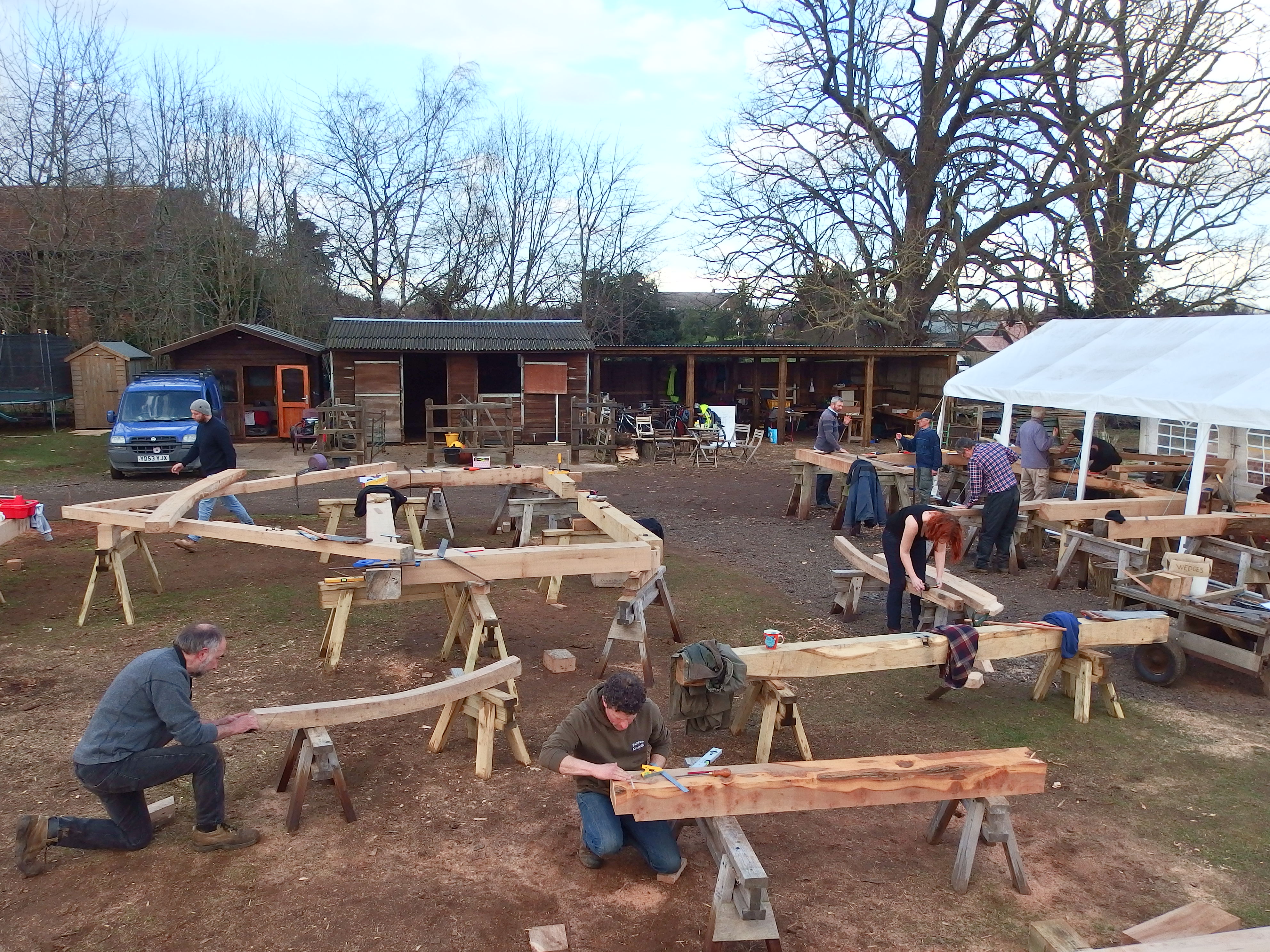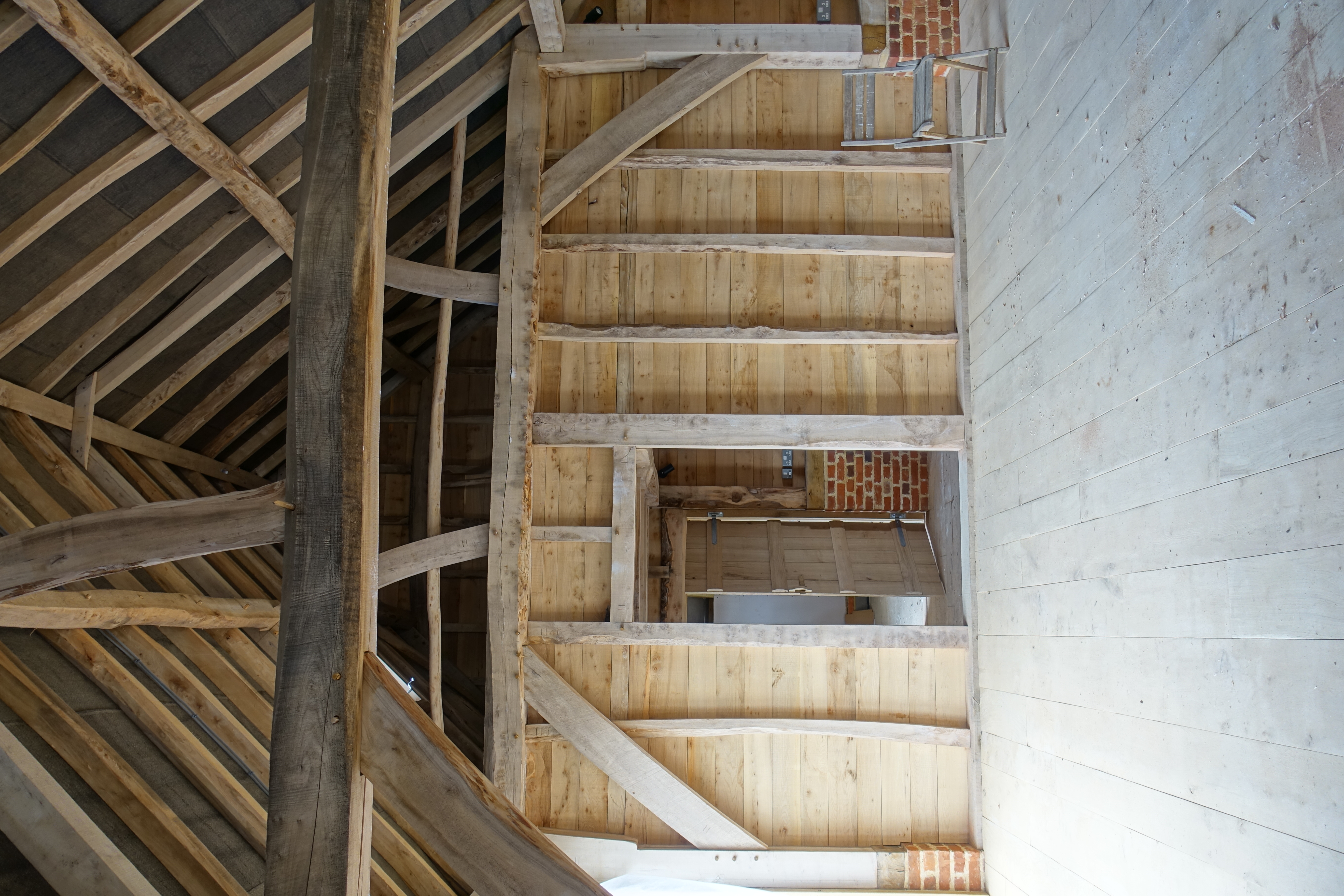Robert Somerville introduces his new book 'Barn Club'.

Barn Club: Making and raising timber-framed barns in a time-honoured way. Robert J Somerville, Feb 2021.
I have always been struck by how the old barns of the British countryside are so beautiful. These buildings are so unlike the modern versions. They are unassuming, functional buildings made by un-named village carpenters, yet powerfully expressive and delicately detailed. No architects were required. Just the knowledge, the hand tools and the arms and efforts of a local community. Each county has their own traditions, reflecting not just the farming traditions and technical abilities of their makers, but the changing geology and landscapes across our country.
So when I moved to Hertfordshire nearly twenty years ago, it came as no surprise that there would be a unique approach in this region. I found among the encircling steel and concrete sheds of modern arable agri-business, the derelict timber barns of a bygone age of wheat and barley harvest storage. Even more interestingly, around the Eastern midlands and into East Anglia are numerous elm-built barns. They have a beauty and structural form of their own, resulting from the particular biological properties of elm wood and lovely creamed-honey glow of the timbers.
I decided to build a barn for myself on our family small-holding. Since I had the freedom to work as I pleased, I wanted to run a sort of Craft Experiment. I decided to do it in the way it was done in the past. I wanted to see what was involved in this process of making and raising that had fallen into disuse over a hundred and fifty years ago, perhaps even before the birth of the likes of William Morris.
Elm trees would be needed, sharp hand tools and a very close look at the exact detailing of the 18th century barns nearby. Probably, most people do not get to see large elms any more. But curiously, not necessarily because these trees no longer exist. Part of the pleasure of moving to Hertfordshire was the discovery of many large elm trees in the landscape, and even whole woods of them. As a carpenter, I could see that there were enough recently dead trees (some just of old age) to provide sufficient timber for a full structural frame.
I spent a year researching, visiting the Chiltern Open Air Museum to look at their elm barns, tracing the owners of elm woodlands, getting the planning permissions and seeing if anyone else had any idea how to raise a barn by hand! The decision to make the barn using hand tools, not power tools, came early on and I didn’t realise at the time just how important this decision was to be. These days carpenters live and breath power tools, and site machinery is an unquestioned and universal starting point for any carpentry project. I became ever more fascinated by the prospect of following in the footsteps of our forebears, and inspired by the prospect of getting a new perspective on my love of trees and making things from wood.
I bought about 25 tons of elm tree trunks, delivered to my yard. I found about 1500 old bricks under a decades-old bramble patch in a neighbour’s garden. I rolled my sleeves up and started digging the footings ... though just to remove the earth as this barn was to have no concrete foundations. At that moment, two friends turned up out of the blue and asked if they could help. Barn Club was born.

Since that day two whole barns have been made and raised by hand with a third structure underway. And I have come to realise that there is nothing better than working out-doors together with people from your community, listening to birdsong, chatting and enjoying the shared labour of the day. Then finally the satisfaction that comes when the barn is finally raised and we can see in front of us the fruits of our labour. The raising day is an extraordinary event, not to be missed if ever you have the chance. With the structure towering overhead and glowing in the setting sun, the trestles set out along its length with tablecloths and flowers adding to the occasion, the raising feast is one you never forget.
We learnt that most things could be done quite easily when enough people are involved, when the old ways of doing things effortlessly are employed, and most significantly, when little or no machinery is brought to the task. It opened the doors to everyone, not just burly blokes! It never failed to impress the physically smaller volunteers when they moved a half-ton log using levers, for example, that it was way easier than they had thought.
When we decide to put our power tools aside, we also open up all sorts of new possibilities. You don’t need personal protective equipment. You don’t need to be constantly wary of losing a fingertip in the blades of a circular saw. Instead, we talk to each other, or ask for help to lift something. We can pause between the strokes of a handsaw to listen to the song thrush in the tree above or watch a robin, sitting on the other end of a beam.
I am also constantly impressed how quickly almost anyone can acquire the skills of using a plumb-bob, scratch awl and dividers to mark out a mortice and tenon joint. No laser levels and measuring tapes are needed. The techniques that the old carpenters used and that we were following are very three-dimensional and not numerical, if that makes sense. People have said how they can almost feel a different part of their brain waking up. I think it is true. So, I have found that this type of hand tool-carpentry is very accessible, highly contagious, and quickly absorbed attainable knowledge. It is almost like an innate human capability.
Another thing about the timber used in barns that seems in tune with our sense of soulfulness, is that the trees are still very visible in the completed frame. A tie beam is often a single tree with the sides roughly sawn away but with the wayne and gentle curves of the stems still very much visible. Its both lovely to see and also to handle as you make the numerous carpentry joints along its length. The same is true for a jowl post that supports the ends of a tie beam. They are usually an inverted tree stem that utilizes the natural flare at the base of a tree to provided the widening of the jowl post where the teazle tenon rises up past the inside of the top plate. That the same trees were viewed in a wood prior to felling by barn club members makes this quality even more poignant.
Another realisation appeared during this carpentry experiment. When milling elm rather than oak, the wood is usable right up to the bark. The sapwood and the heartwood together. This means that the more of each tree is used and fewer trees are needed for each structure. In fact it is intriguing that when the variety of sizes of timber needed for the frame and cladding are sawn from a mixed bag of elm trees, very little is wasted. This is in contrast with my experience of milling to a contemporary list of timber sizes resulting in a big pile of of-cuts and side slabs.
Can this approach work as a sound business proposition? I believe it can. The second of the elm barns was a commercial project, while fully involving Barn Club volunteers and several timber-frame carpentry courses. The spirit of satisfaction and wellbeing that Barn Club generates continued. In fact an even larger crowd of volunteers arrived to help assemble, knock the oak pegs into place and raise the structure into the air.
But why barns? Why Barn Club and not House Club? The answer to that question can be found in the book that was written to share our experience of actually making one. Hopefully it will inspire people about the possibilities of working with elm wood, outdoors, with hand tools and in the company of other people. At the very least it is a feel-good read in these truly difficult times. “Barn Club” is published by Chelsea Green on 11th March 2021. It is also available for pre-order from Bookshop.org and at good local bookshops.

